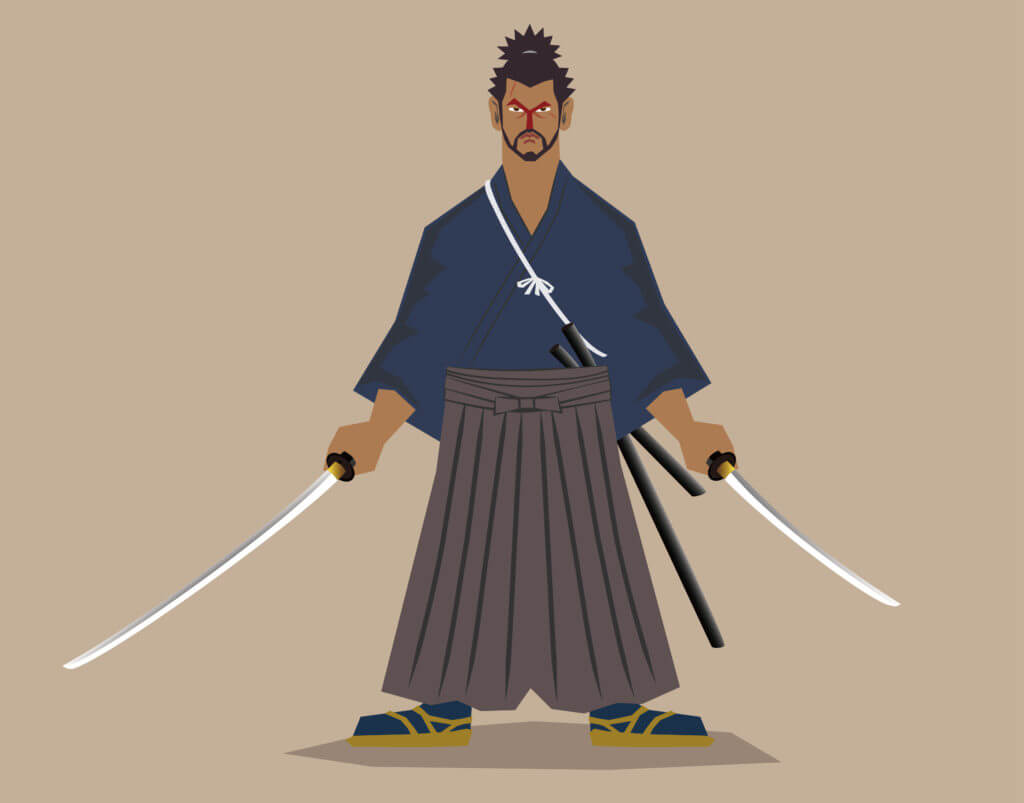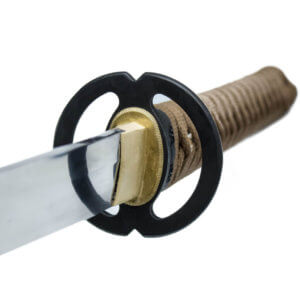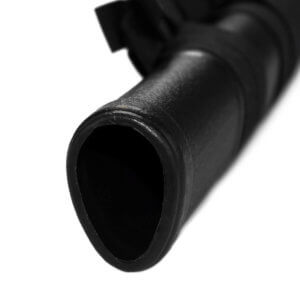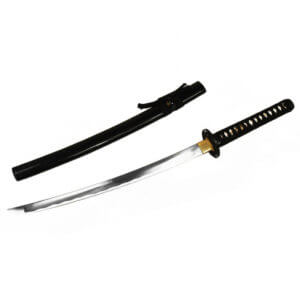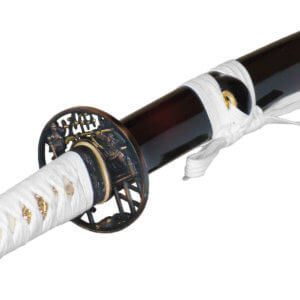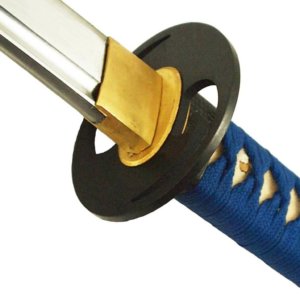Miyamoto Musashi is generally regarded as the greatest and technically best samurai of all time.
We tell his story.
Miyamoto Musashi - His first years
A note first: What we know today about Musashi Miyamoto's early life is difficult to verify. This is because all he left behind after his death were notes and writings about his sword fighting techniques.
However, most Japanese historians agree that Miyamoto Musashi was born in 1584 in the Year of the Monkey. At this time, Japan was in a state of civil war in which several parties were trying to gain power over the country.
Miyamoto Musashi was named after his birthplace - Miyamoto. His father was already a recognised samurai fighter. He taught the young Musashi the teachings of Japanese sword fighting kenjutsu and jittejutsu, as is traditional among the samurai. Even then, it quickly became clear that Musashi had a great talent for kenjutsu in particular.
As his mother died shortly after he was born, his stepmother Toshiko took care of him. When his father separated from her, he sent Musashi to be educated by his uncle Dorin, a monk. There he learnt to read and write as well as the teachers of Zen Buddhism.
Little is known about the whereabouts of Musashi's father. Some claim that he abandoned his son completely at the age of 9-10. Others say that he died in a duel around this time. What is certain is that he was always strict and unrelenting in his demands on Musashi and had little love for him.
Musashi's first duel
According to the information in his book "Go Rin No Sho" (The Book of 5 Rings), Musashi fought his first duel at the age of 13. His opponent was Arima Kibei from the Tajima province. Just seconds after the duel began, Musashi is said to have thrown his opponent to the ground and struck him with a bokken. The latter subsequently died while vomiting blood.
At the age of 16-20, Musashi left his uncle's temple to pursue his dream of becoming Japan's greatest swordsman.
On the battlefield: The Battle of Sekigahara
Due to the fact that his family was allied with the Toyotomi clan, Musashi fought for Toyotomi Hideyoshi's army during the decisive battle for Japan on 21 October 1600. 3 years later, Musashi fought again against the Tokugawa clan. However, Tokugawa became shogun after winning the battle and established the Tokugawa period, which would last for 266 years.
The Yoshioka School
After this battle, Musashi travelled through Japan, always with the aim of perfecting his swordplay. After a while, he arrived in Kyoto at the age of 21-22. Here began his famous series of duels with the Yoshioka clan. The clan was notorious for its sword fighting style Yoshioka Ryu, which was very well known in Japan.
The duel with Yoshioka Seijuro
Musashi confidently challenged the founder of the Yoshioka school and head of the Yoshioka family to a duel. It took place on 8 March 1604 in northern Kyoto. Musashi's strategy involved turning up late for the duel in order to upset his opponent. He was successful. Shortly after the start of the duel, he threw himself at his opponent, breaking his left shoulder with a single blow and winning the duel. The defeated Yoshioka Seijuro then retired in dishonour and became a Zen monk.
The duel with Yoshioka Denshichiro
As the successor to his retired brother Seijuro, Denshichiro challenged Musashi to a duel to restore his family honour. But Musashi, who was fitter in all respects, killed him shortly after the duel began with a single blow to the head with a wooden sword.
The duel with Yoshioka Matashichiro
After Denshichiro died, only 12-year-old Matashichiro remained to restore the honour of the family clan. This time, the clan demanded a duel at night. As this was rather unusual, Musashi was suspicious. So this time he went to the agreed meeting point too early and was able to observe from his hiding place how other armed warriors were hiding behind the boy and ambushing him. Musashi then ran over to the boy, beheaded him and fought his way through the nearby rice fields.
Many say that it was at this moment that Musashi realised the advantage of fighting with 2 weapons, which ultimately led to his development of the Kenjutstu form "Niten Ichi Ryu" or "Nito-Ryu".
His further journey took him to the Hozoin Temple, where he trained with the monks and then travelled on through Japan.
His most famous duel: the fight with Sasaki Kojiro
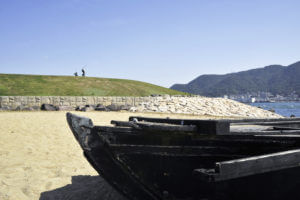
Alongside Musashi, Sasaki Kojiro was regarded as the best swordsman of the time. He had developed his own form of kenjutsu and used an odachi, a very long version of a tachi sword, instead of the usual katana.
The duel finally took place on Ganryu Island on 13 April 1612. As Musashi did not appear at first, those present were already making fun of him. They said he had left out of fear. But that was not the case. Musashi had again chosen the tactic of arriving late to unsettle his opponent and sailed to the island separately in a fishing boat.
When the duel began, both samurai acted with respect for the other's skill. However, Sasaki got carried away with a first attack, which Musashi was able to fend off and then launched a counterattack. He hit his opponent's ribs and lungs, causing him to bleed to death. As he bent over his defeated opponent, the moment had come when he had his spiritual awakening and decided never to fight duels to the death again.
A film version of this fight:
Musashi's late life & death
At the age of 28, Musashi had already fought over 60 battles, all of which he had won. After he had laid down his sword, he devoted himself mainly to building sword fighting schools and temples as well as arts and crafts. In 1641, he wrote his book "Hyoho Sanju Go" for the daimyo Hosokawa Tadatoshi, which is regarded as the basis for his best-known book "Go Rin No Sho".
In 1642, Musashi suffered from attacks of neuralgia, a severe nervous disorder. Realising that his end was near, he withdrew to the Reigando cave in 1643 to finish writing "Go Rin No Sho". In 1645, he presented it to his best student. He died in the cave that same year, probably on 13 June.
Text source: www.musashi-miyamoto.com

